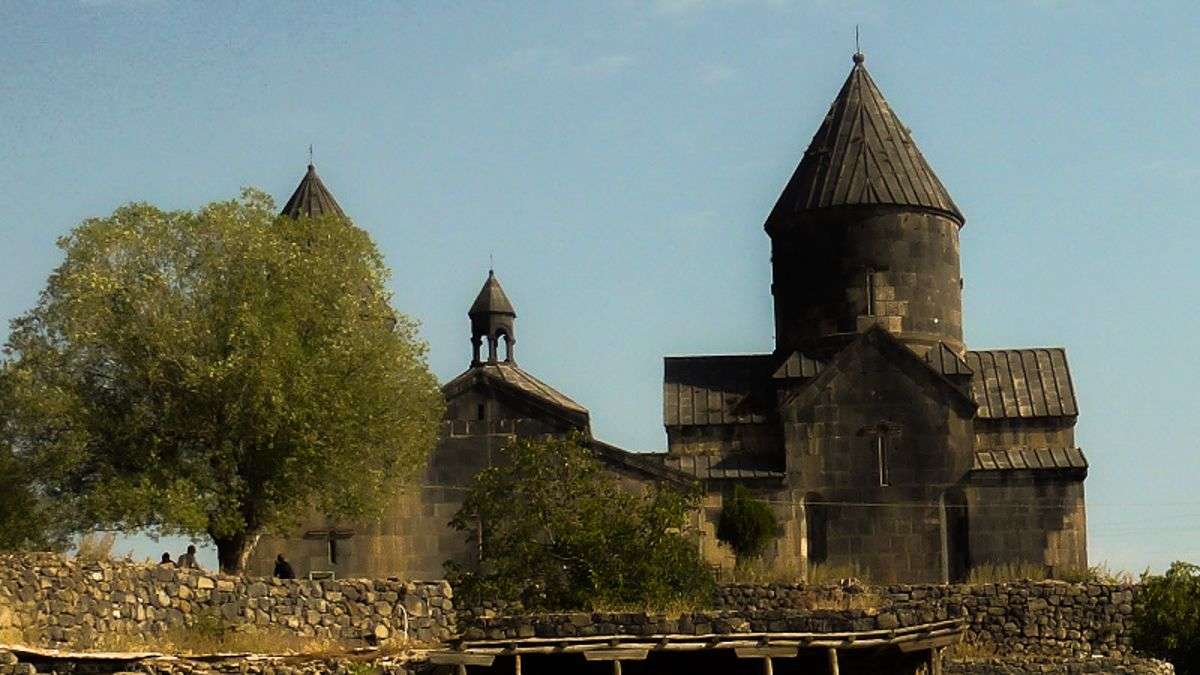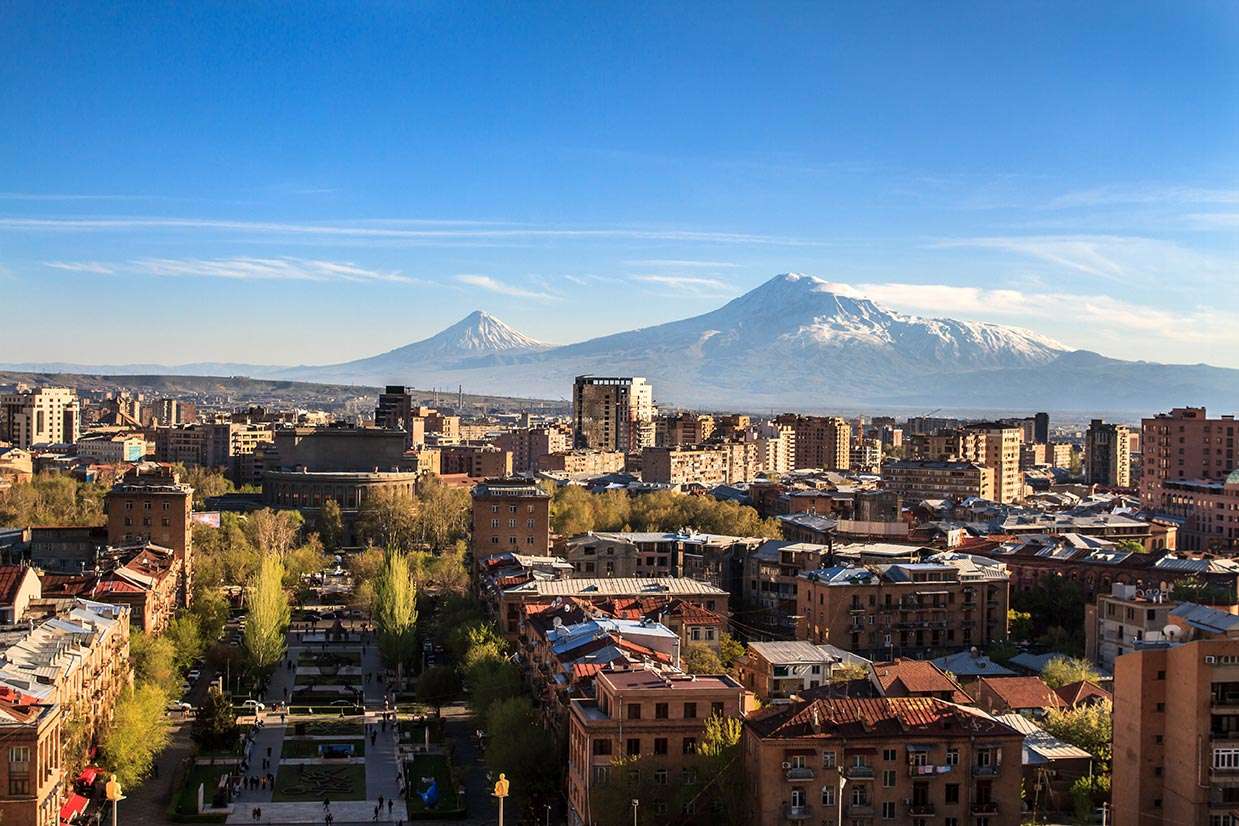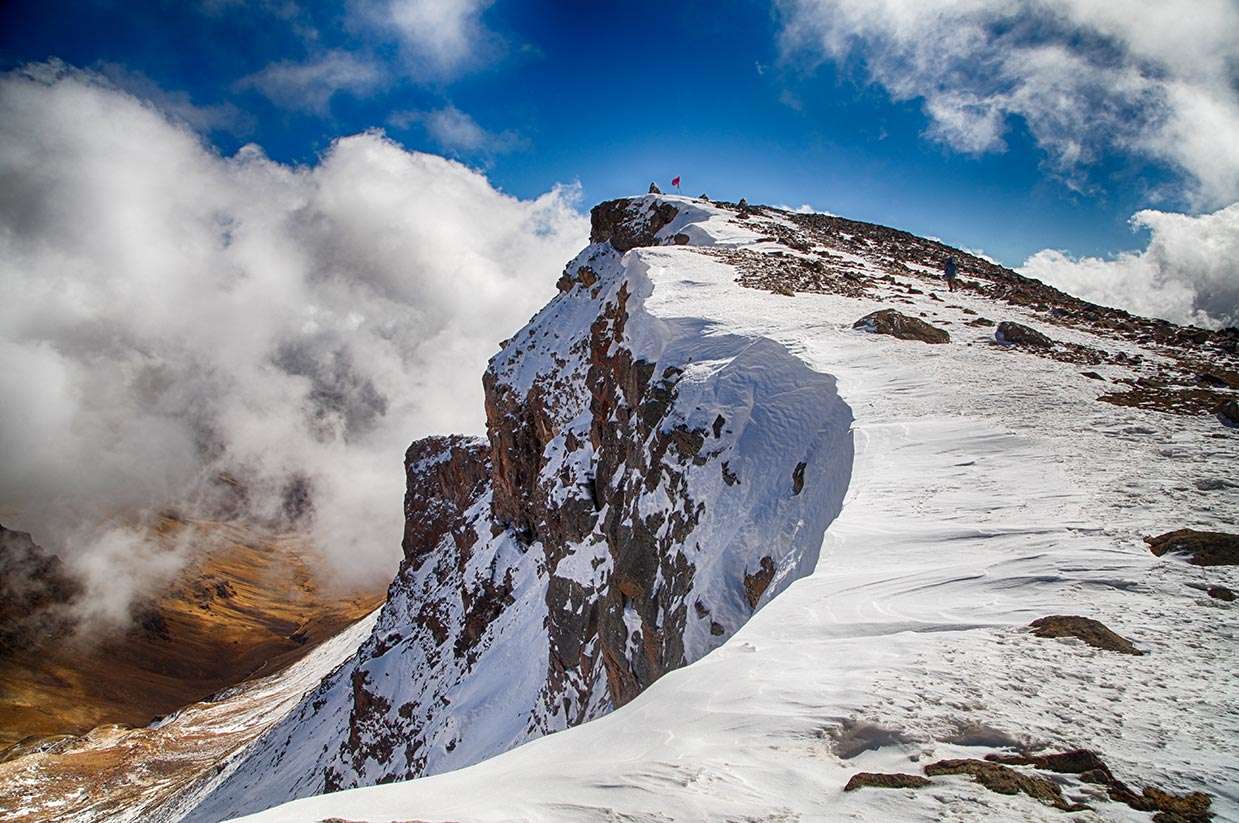Tegher Monastery
Tegher is a monastery from the 13th century. It towers like a dark fortress on the southern slope of Aragats, above the gorge of the Arkhashyan. The complex was built by the royal family Vachutyan, especially by the wife of Prince Vache. The area invites you to linger and enjoy wonderful views. Wherever you look, there is a wide valley bounded on the horizon, with snow-capped peaks. There are even picnic areas with benches and tables. Interestingly, despite its beauty and architectural uniqueness, Tegher has never been mentioned by historians. The main information about its construction, devotion, and work is known from an inscription of the church itself.
The monastery consists of two parts, the main church, and the Gavit. The main church is called St. Astvatsatsin (Holy Mother Church). In 1467, teacher Sargis from Byurakan built walls around the monastery. The earthquake of 1948 damaged a considerable part of the monastery. Restorations, however, were done in the 1950s. Additional work was organized in 1970. This monastery survived the hard times during the Mongol invasions. There are some trees in the garden of the church and you can even eat the fruits that grow on these trees. You may light a candle in the church and attend a mass. The architect of the church is Vardapet Aghbayrik. It is not just the black colour that distinguishes this church from the other Armenian churches. Unlike other churches, which were decorated by people with more enthusiasm than their own homes, Tegher lacks any decoration, including pictures, inscriptions, and stonework. There are only some carved crosses in the main church. One of the architectural features of Tegher are the two-storey mausoleums that occupy the Gavit. There is another possible reason for the lack of fame of Tegher, and it's associated with its name. The village of Tegher was once called Degher (meaning "medicine"). The village was given this name because of the medicinal herbs that once grew here. These herbs were often used to heal Armenian soldiers. Therefore, Tegher Monastery could be sheltered people who needed faith and help, this is why additional decorations were not taken into account.
The best seasons to visit Tegher are spring and autumn. During this period nature is especially splendid and breathtaking. The green that covers the nearby hills forms a unique combination with the black colour of the church. A number of khachkars (cross-stones) may be unfolded around the churches. These engraved stones, which are typical for Armenia, can be found in all the churches of the country, even those places that are not famous for any decorations. These cross-stones were made in memory of the founders of the monastery. This was very common in Armenian history. Rich people have often built churches and ordered cross-stones. In this way, they hoped for a respectful attitude for their last day. The cross-stones are as black as the church itself. Although Tegher Monastery is less known among other sacred places and offers no golden mugs and paintings, books, ornate decorations, and ornaments, it is certainly impressive and beautiful with its simplicity and austere spiritual atmosphere. Although it is not very popular with tourists, it is worth visiting.





